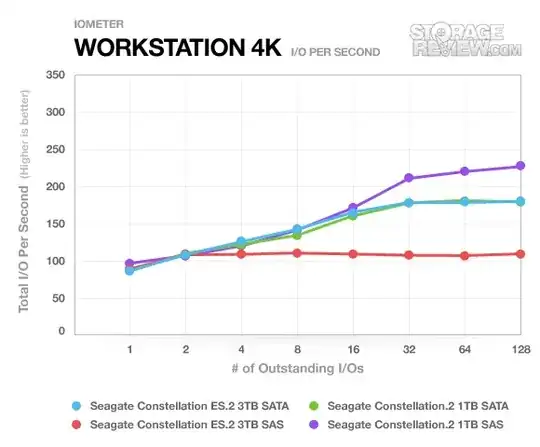I believe that Womble's comment to Peter Schofield is the best observation here...these aren't true SAS disks.
No doubt you're being sold "nearline SAS", which is where they take a SATA disk and put a SAS interface on it. The drive mechanics are identical to the SATA version; only the interconnect has changed.
When you plug a nearline SAS drive into a SAS controller, it will be faster than the equivalent SATA drive because the protocols are different, and it takes a certain amount of time to convert between the SATA protocol and the SAS protocol. Wikipedia says that there can be a 30% increase in speed, but I've never delved into the protocols themselves, so I couldn't tell you.
-
As an aside, I really don't know what kind of faith I'd put into those numbers. Storage Review does a pretty decent job, I think, but I can't figure out why they didn't get another drive to test when the disk started performing like this:

(source: storagereview.com)
That's a drive that should be physically identical and in terms of interface, should be performing much more in-line with the others. The fact that it shows a discrepancy like this indicates (to me, anyway), that there was something wrong with the device.
They do say that it checks out with Seagate's test suite, but I wouldn't put stock in the results until they're checked against another drive of the same model. Those results are just too weird.
Edit
Since it was brought to my attention that I didn't actually answer the question, my guess is that the SAS drive will give you better performance because of the reasons I listed above. That is what I would go with, unless research bears out the odd results that Storage Review got.
